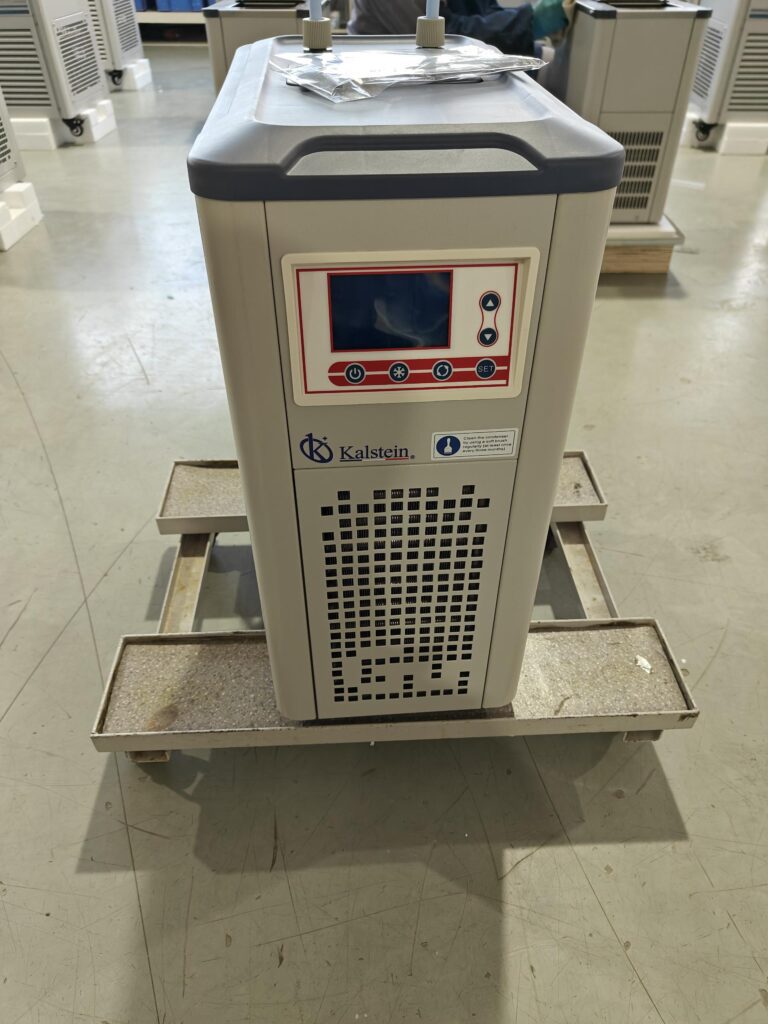In the world of clinical research and diagnostics, precise temperature control is crucial. One of the most efficient tools to achieve this goal is the recirculating chiller. Developed by leading manufacturers like Kalstein, these devices have become essential components of modern clinical laboratories. In this article, we will explore how recirculating chillers optimize processes, their importance in the lab, the technology behind them, and how to make the best purchase in terms of price and specifications. https://kalstein.eu/categorie-produit/laboratory-sector/recirculating-chiller/?lang=en
Importance of Recirculating Chillers in the Laboratory
Recirculating chillers are essential for maintaining stable thermal conditions in a variety of laboratory equipment and procedures. This includes diverse instruments such as spectrophotometers, fluorescence microscopes, and nuclear magnetic resonance systems. These devices require strictly controlled temperatures to operate efficiently and accurately.
Additionally, recirculating chillers contribute to the longevity of other laboratory equipment by preventing overheating, which can lead to mechanical failures and compromised analysis results. The capability of these chillers to recycle water and maintain constant temperatures also makes them environmentally friendly and cost-effective long-term solutions.
How Recirculating Chillers Work
The basic principle behind recirculating chillers is heat transfer. These devices use specific refrigerants to absorb heat from connected equipment and then efficiently dissipate it. Recirculating chillers from recognized manufacturers like Kalstein are designed with advanced technologies that enhance thermal efficiency and reduce energy consumption.
The internal structure of a recirculating chiller typically includes a compressor, a condenser, an evaporator, and a recirculation pump. The compressor plays a vital role by increasing the pressure of the refrigerant so it can transfer heat more effectively. Meanwhile, the pump ensures that the refrigerant flows constantly through the system, guaranteeing stable temperatures.
Advantages of Using Kalstein Recirculating Chillers
Kalstein has distinguished itself as a leading manufacturer in the laboratory equipment market, offering recirculating chillers with features that meet various clinical and analytical needs. One of the main benefits of opting for a Kalstein recirculating chiller is the precision in thermal control, achieving accuracies of up to ±0.1°C. This precision is essential in applications where even minimal variations can affect experiment results.
Additionally, Kalstein recirculating chillers are known for their durability and ease of maintenance. They are made from high-quality materials that resist corrosion and wear, ensuring a long service life. They are also designed to be user-friendly, with simple, clear interfaces that facilitate operation and monitoring.
Considerations When Purchasing Recirculating Chillers
When purchasing a recirculating chiller for your clinical laboratory, it is important to consider several factors beyond price. Technical specifications such as cooling capacity, temperature range, and the type of refrigerant used are crucial for selecting the appropriate equipment.
It is also important to assess the manufacturer’s reputation. Kalstein, with its extensive portfolio of recirculating chillers, offers equipment that has undergone rigorous quality and performance testing. Furthermore, post-sale and technical support are vital aspects that should not be overlooked. These can make a difference in problem resolution and in maximizing the operating time of the equipment.
Price and Sales Options for Recirculating Chillers
The price of recirculating chillers varies depending on their features and capacities. It is fundamental to conduct a cost-benefit analysis to ensure that the investment aligns with the specific needs of the laboratory. Generally, recirculating chillers from manufacturers like Kalstein offer excellent value for money due to their durability and efficiency.
Regarding sales options, many suppliers offer the possibility of financing the purchase of this equipment, allowing scientific and clinical institutions to spread the costs over time. It is also advisable to be aware of offers and discounts that may arise at trade shows or during business promotions.
Sustainability and Energy Efficiency of Recirculating Chillers
In today’s era, sustainability and energy efficiency are more relevant than ever. Modern recirculating chillers, such as those offered by Kalstein, are designed to minimize energy consumption without compromising performance. They are equipped with compressors and recirculation systems that optimize the use of the refrigerant, significantly reducing the laboratory’s carbon footprint. If you wish to see the high-end product catalog we have for you at KALSTEIN, visit us at https://kalstein.eu/?lang=en
Additionally, many recirculating chillers come with energy-saving modes and monitoring systems that allow users to identify and correct any inefficiencies in real time. These systems not only contribute to environmental sustainability but can also translate into significant savings on energy bills.
Final Conclusion
Recirculating chillers have become indispensable equipment in clinical laboratories due to their ability to maintain precise and stable thermal conditions. Manufacturers like Kalstein have developed models that combine efficiency, durability, and ease of use, making them an ideal choice for any laboratory. By considering factors such as the manufacturer’s reputation, technical specifications, and post-sale support, laboratory professionals can make an informed purchase that offers the best balance between price and performance. In an environment where precision and stability are critical, investing in a good recirculating chiller is undoubtedly a wise decision.

